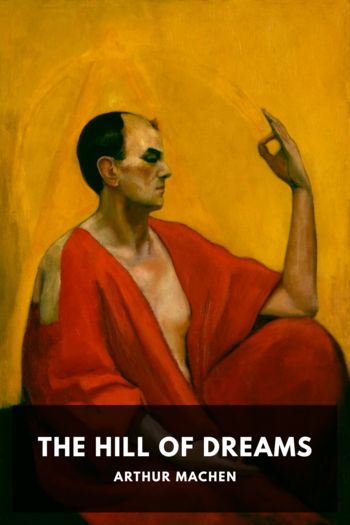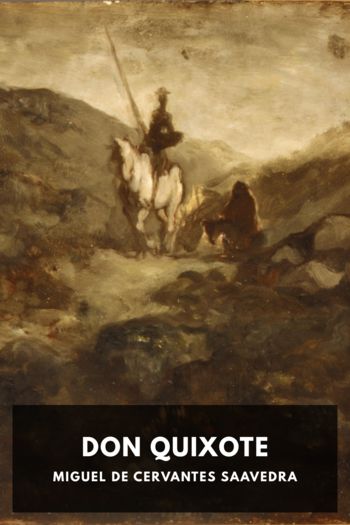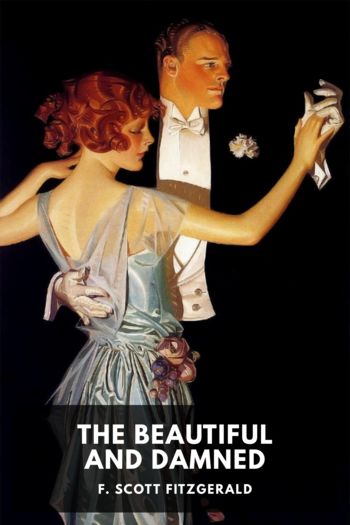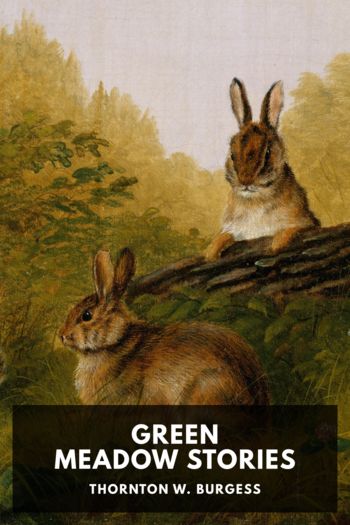The Hill of Dreams by Arthur Machen (best books for students to read .txt) 📕

- Author: Arthur Machen
Book online «The Hill of Dreams by Arthur Machen (best books for students to read .txt) 📕». Author Arthur Machen
By Arthur Machen.
Table of Contents Titlepage Imprint Introduction The Hill of Dreams I II III IV V VI VII Colophon Uncopyright ImprintThis ebook is the product of many hours of hard work by volunteers for Standard Ebooks, and builds on the hard work of other literature lovers made possible by the public domain.
This particular ebook is based on a transcription produced for Project Gutenberg and on digital scans available at the Internet Archive.
The writing and artwork within are believed to be in the U.S. public domain, and Standard Ebooks releases this ebook edition under the terms in the CC0 1.0 Universal Public Domain Dedication. For full license information, see the Uncopyright at the end of this ebook.
Standard Ebooks is a volunteer-driven project that produces ebook editions of public domain literature using modern typography, technology, and editorial standards, and distributes them free of cost. You can download this and other ebooks carefully produced for true book lovers at standardebooks.org.
IntroductionIn the year 1895 I was at length certain, or almost certain, that I was a man of letters. I had been, if I may put the matter thus familiarly, for more than twelve years “on the job.” In ’83 I had written a little book called The Anatomy of Tobacco, chiefly as a counter-irritant to loneliness and semi-starvation. In ’84 I had translated the Heptaméron of Margaret of Navarre, while ’85 and ’86 were devoted to the concoction of The Chronicle of Clemendy a volume of medieval tales. Another translation, a version of Le Moyen de Parvenir by Beroalde de Ferville—his name is more beautiful than his book—occupied the leisure of my evenings somewhere about ’88 and ’89, the days being given to the rendering of the Memoirs of Casnova (twelve volumes) into the English tongue.
In 1890 I was writing essays and short stories and odds and ends and varieties for papers which have now become ghosts: The Globe, The St. James’s Gazette, and The Whirlwind; to say nothing of “smart” tales contributed to an extinct, or almost extinct, family of journals; the “society” papers. In ’90 and ’91. I wrote the “Great God Pan” which was published at the end of ’94 and made a mild sort of sensation with old ladies, on the press and off it. And in the spring and summer of ’94 I was busy with The Three Impostors which fell somewhat flatly when it was issued in the autumn of ’95. So, as I say, I began to feel almost convinced towards the end of the year 1895 that I was in some degree a literary man, that my business lay in the direction of writing books. Consequently, it appeared that I had better go and write one. Very good: the next question was—what sort of a book should I write?
And here, the reception that had been given to The Three Impostors helped me greatly. I have said that it was of the flat kind, but beyond this, it was critical. I was told that I was merely a second-rate imitator of Stevenson. This was not quite all the truth, but there was a great deal of truth in it, and I am glad to say that I took my correction in a proper spirit. I resolved to try to amend my ways. I made manly resolutions. As I put it to my old friend, that distinguished American citizen, A. E. Waite: “I will never give anybody a white powder again.” And on the whole, I have honoured that vow ever since. I was to start afresh, then, from the beginning, to turn over a new leaf, both as regards matter and manner. No more white powders, no more of the calix principis inferorum, no more hanky-panky with the Great God Pan, or the Little People or any people of that dubious sort; and this was the hard part of it no more of the measured, rounded Stevensonian cadence, which I had learned to use with some faculty and more facility. And so we were getting on; I had at least found out the sort of book that I was not going to write. It merely remained to discover what sort of book I was going to write.
I took this problem out with me on solemn walks in dimmest Bloomsbury, then a region most fit for the contemplations of a meditative man. I had just moved into chambers at 4 Vernlam Buildings, Gray’s Inn, and so, by way of Theobald’s Road, I had easy access to the old, grave squares where life moved quietly and peaceably as if it were the life of a little country town. Grey square opened into grey square, silent street into silent street; all was decorous and remote from the roar of traffic and the rush of men. But few people ascended the steps of the dim old houses, but few descended them; the local tradesmen, all old established, old-fashioned, steady and good, called for orders and purveyed their wares in a sober way; Bloomsbury was silence and repose; and in its grey calm I pursued my anxious studies, and submitted my problems to myself.
The required notion came at last, not from within, nor even from Bloomsbury, but from without. I am not quite sure, but almost sure, that the needed hint was discovered in an introduction to Tristram Shandy written by that most accomplished man of letters, Mr. Charles Whibley. Mr. Whibley, in classifying Sterne’s masterpiece, noted that it might be called a picaresque of the mind, contrasting it with Gil Blas which is a picaresque of the body. This distinction had struck me very much when I read it; and now as I





Comments (0)